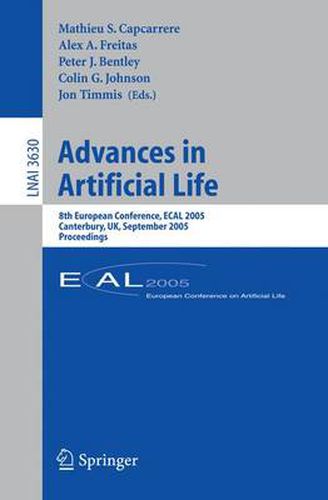Readings Newsletter
Become a Readings Member to make your shopping experience even easier.
Sign in or sign up for free!
You’re not far away from qualifying for FREE standard shipping within Australia
You’ve qualified for FREE standard shipping within Australia
The cart is loading…






This title is printed to order. This book may have been self-published. If so, we cannot guarantee the quality of the content. In the main most books will have gone through the editing process however some may not. We therefore suggest that you be aware of this before ordering this book. If in doubt check either the author or publisher’s details as we are unable to accept any returns unless they are faulty. Please contact us if you have any questions.
TheArti?cialLifetermappearedmorethan20yearsagoinasmallcornerofNew Mexico, USA. Since then the area has developed dramatically, many researchers joining enthusiastically and research groups sprouting everywhere. This frenetic activity led to the emergence of several strands that are now established ?elds in themselves. We are now reaching a stage that one may describe as maturer: with more rigour, more benchmarks, more results, more stringent acceptance criteria, more applications, in brief, more sound science. This, which is the n- ural path of all new areas, comes at a price, however. A certain enthusiasm, a certain adventurousness from the early years is fading and may have been lost on the way. The ?eld has become more reasonable. To counterbalance this and to encourage lively discussions, a conceptual track, where papers were judged on criteria like importance and/or novelty of the concepts proposed rather than the experimental/theoretical results, has been introduced this year. A conference on a theme as broad as Arti?cial Life is bound to be very - verse,but a few tendencies emerged. First, ?elds like ‘Robotics and Autonomous Agents’ or ‘Evolutionary Computation’ are still extremely active and keep on bringing a wealth of results to the A-Life community. Even there, however, new tendencies appear, like collective robotics, and more speci?cally self-assembling robotics, which represent now a large subsection. Second, new areas appear.
$9.00 standard shipping within Australia
FREE standard shipping within Australia for orders over $100.00
Express & International shipping calculated at checkout
This title is printed to order. This book may have been self-published. If so, we cannot guarantee the quality of the content. In the main most books will have gone through the editing process however some may not. We therefore suggest that you be aware of this before ordering this book. If in doubt check either the author or publisher’s details as we are unable to accept any returns unless they are faulty. Please contact us if you have any questions.
TheArti?cialLifetermappearedmorethan20yearsagoinasmallcornerofNew Mexico, USA. Since then the area has developed dramatically, many researchers joining enthusiastically and research groups sprouting everywhere. This frenetic activity led to the emergence of several strands that are now established ?elds in themselves. We are now reaching a stage that one may describe as maturer: with more rigour, more benchmarks, more results, more stringent acceptance criteria, more applications, in brief, more sound science. This, which is the n- ural path of all new areas, comes at a price, however. A certain enthusiasm, a certain adventurousness from the early years is fading and may have been lost on the way. The ?eld has become more reasonable. To counterbalance this and to encourage lively discussions, a conceptual track, where papers were judged on criteria like importance and/or novelty of the concepts proposed rather than the experimental/theoretical results, has been introduced this year. A conference on a theme as broad as Arti?cial Life is bound to be very - verse,but a few tendencies emerged. First, ?elds like ‘Robotics and Autonomous Agents’ or ‘Evolutionary Computation’ are still extremely active and keep on bringing a wealth of results to the A-Life community. Even there, however, new tendencies appear, like collective robotics, and more speci?cally self-assembling robotics, which represent now a large subsection. Second, new areas appear.